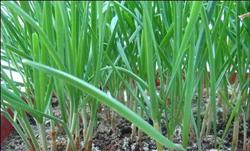Key points of management of pumpkin planting in winter
Pumpkin is originally planted in spring and summer, the planting area in autumn and winter is relatively small, but the market demand of pumpkin in winter is not small, so it can be planted properly according to the market demand in winter. It is listed in winter and needs to be cultivated in autumn. in fact, the way of cultivation in winter is similar to that in spring and summer. So how to manage growing pumpkins in winter? Today, the editor brings you the key points for the management of growing pumpkins in winter. Let's take a look.

1. Fertilizer and water management
Fertilizer and water management is essential in the process of planting, when preparing the soil, the fully mature farm manure is mixed with the soil as base fertilizer. The amount of topdressing after planting should be determined according to the degree of soil fertility and the growth progress of pumpkin, and the amount of fertilizer should be controlled in the early stage of plant development to prevent excessive nutrients from causing excessive growth of plant branches. In the flowering and fruiting period, we should pay attention to provide sufficient nutrients for the plant, pay attention to nutrient balance, not single or excessive fertilization. After planting, the fixed root was watered enough to prevent the lack of water from affecting the plant growth.
2. Ploughing and weeding
Pumpkin is a trailing crop, when the vines of the plant grow to a certain extent, we should pay attention to the appropriate ploughing and weeding work. In the process, you should avoid damage to the roots and affect the absorption of nutrients, and then as the vines grow, you can stop ploughing when the vines have covered the ground. In the extension period, it is necessary to do a good job of ploughing in time in order to better promote the root elongation. Get rid of all the weeds growing around you, because the weeds will compete with the plants for nutrients and water, so they should be removed in time.
3. Pruning and pressing vine
Pumpkin vines are very long, so there is a correct pruning method that can effectively promote early maturity and high yield. The varieties with strong growth and more lateral branches will be removed to improve the growth quality of pumpkin and improve the permeability of vegetable fields. If the planting density is too dense, it is necessary to press the vine, which can properly inhibit the growth of the vine and transfer part of the nutrition to the fruit. Make the plant grow better, promote the expansion of fruit and the accumulation of sugar content.
4. Disease control
Diseases have a great impact on the growth of pumpkins, so we must pay attention to the occurrence of diseases in the planting process. Strengthen orchard management, regular disinfection of orchards, ploughing and soil cultivation can also effectively remove germs and insect eggs in the orchard. After harvest, it is necessary to do a good job in clearing the garden, cleaning up the diseased fruits, branches and leaves out of the garden, away from the garden for centralized treatment. The plants in the early stage of the disease should be checked in time, and then corresponding measures should be taken according to the test results to minimize the loss in order to increase the yield and obtain higher economic benefits.
There is a great market demand for pumpkins to grow in winter, and their market prices will rise. When planting, we should pay attention to respond flexibly to all kinds of emergencies, and it should be noted that pumpkins are not resistant to waterlogging, so if there is too much water in the garden, the excess water should be discharged from the garden in time. Otherwise, the roots will be retted and the nutrient absorption of pumpkin will be blocked, which will have a serious impact on the quality and yield.
- Prev

Pollution-free cultivation techniques of eggplant in summer
Pollution-free cultivation techniques of eggplant in summer
- Next

What should summer plant leek notice?
What should summer plant leek notice? Summer planting leek: hot and rainy, summer leek management should pay attention to weeds, drainage and waterlogging, strengthen fertilizer and water management and pest control, and reduce the number of harvests to promote the exuberant growth of leek. Cut-free: high temperature in summer leads to less nutrient accumulation and high consumption of leek.
Related
- Where is it suitable to grow horseradish in China? it is expected to see the middle altitude horseradish in Alishan.
- How to prevent tomato virus disease reasonably? (Control methods included)
- Many people like to plant towel gourd on the balcony. What are the main points of this method and management?
- What crops can chili peppers be mixed with?
- Fertilization techniques and matters needing attention in Tomato
- What are the grafting techniques for peach seedlings in spring?
- Harm and control methods of root swelling disease of Chinese cabbage
- What are the pests of sweet potatoes? How to prevent and cure it?
- Symptoms, causes and Control methods of navel Rot in Tomato
- The cause of "Cucumber rotten bibcock" in Farmers' planting Cucumber and its Control Plan

